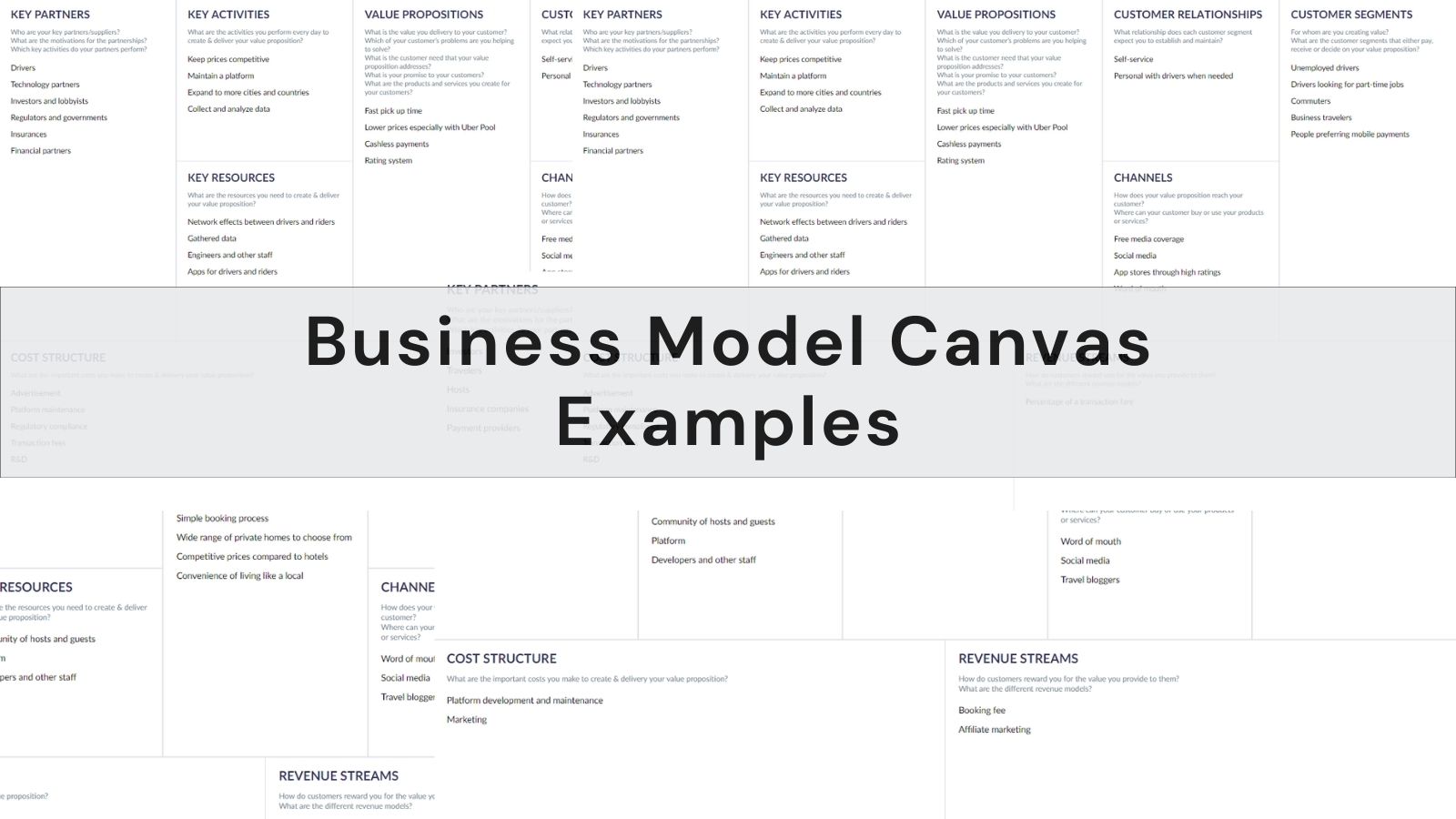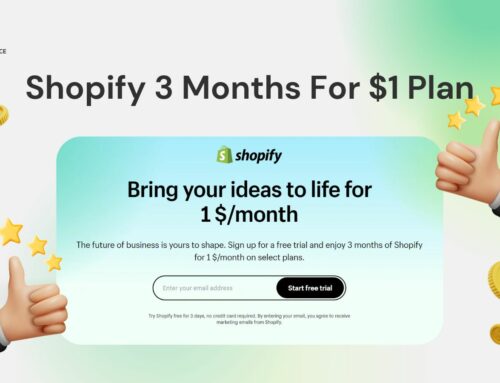Have you ever wondered how such names as Amazon, Shopify, Airbnb, and Tesla can actually outperform their competitors and become industry leaders? Success in the dog-eat-dog world of eCommerce basically depends on how good a business model is. In this article, we are going to give you an in-depth insight into six such highly successful business model canvas examples and explain how you can apply these strategies to your eCommerce business for a competitive edge when driving growth.
Contents
6 Best Business Model Canvas Examples Across Industries
Business Model Canvas, or BMC in its popular abbreviation, is a term coined by Alexander Osterwalder. The Business Model Canvas is a strategy management tool used in the visualization, development, and improvement of business models, focusing on how a business creates, delivers and captures value. This helps in gap identification, operational improvement, nurtures innovation, and proper communication of business strategy.
Below are the business model canvas examples of six successful companies across different industries.
Amazon
The list of business canvas model examples starts with Amazon, which is a big player in online shopping. The Amazon business model represents one of the best business model canvas channels examples. There are two main customer segments that this company serves: retail clients and business clients. In regard to them, both their needs will definitely be met by the company, which relies on a robust infrastructure and a multi-channel approach, including eCommerce platforms, AWS cloud services, and logistical solutions.

Regarding key activities, the business model of Amazon is based on efficient key activities like quick fulfillment, in-time delivery, and smooth shipping systems. At the same time, the strategic partnerships with courier service providers and suppliers ensure smooth operations.
In such a model, the revenue streams would come through e-commerce sales, subscriptions, and AWS services, while the cost structure would focus on fulfillment, shipping, and technological infrastructures. By doing so, Amazon could achieve a very effective scaling-up process and keep innovating toward ever-changing market demands.
>>> You may concern: How to Start Ghost Commerce: Step-by-Step Guides
Regarding business model canvas customer relationships examples, it is great to mention Google. The first thing about the business model of Google is that this corporation serves different groups of customers. These groups are people who use its services for free, like those doing searches, those creating content, and those who pay to advertise on Google.

Moving to the revenue streams block, Google earns money from the advertisers, whose ads appear on the search result or on websites. This money pays for the free services given to the other two groups using search and content owners.
Google’s key resource is its search platform, which includes Google.com, AdSense for content owners, and AdWords for advertisers. Key strategic activities involve managing its platform and maintaining the large infrastructure required to support it.
Google’s key partners include content owners, from whom much of its revenue is indirectly generated – advertisers rely on these content owners to place their ads. Other key partners are the OEMs, or Original Equipment Manufacturers. They manufacture mobile phones for which they use an operating system provided by Google for free. In return, users of these devices use Google’s search by default. It brings in more users within the ecosystem and increases revenue.
Skype
The fourth business model is that of Skype. From the business model canvas, Skype offers two key value propositions. The first is the ability to make calls over the internet, including video calls for free. The second is to be able to call phones at a low cost.

In terms of revenue streams, Skype earns its money through a freemium business model. That is, most users use the service for free to make internet calls, and about 10% of users pay for the premium prepaid service.
Skype is also one of the good customer relationship examples for business model canvas. The telecommunications platform typically has a self-service approach, where customers rely on the support website for help. The main ways to connect with customers are through its website, Skype.com, and partnerships with headset brands.
Looking at key partnerships, activities, and resources, Skype can offer cheap and free calls because it doesn’t need to maintain its own telecommunications network like traditional providers. It only has to maintain a minimal infrastructure like backend software and servers for managing user accounts in order to give its special value to the customer groups that are being served.
>>> Read more: Check Out 20+ Best Digital Products to Sell on Etsy
Airbnb
Airbnb’s business model speaks to two very critical sets of customers: travelers seeking unique, affordable accommodation and hosts seeking to make extra money. Its value proposition focuses on offering all kinds of affordable private homes with the ease of living like a local.

As can be seen, key activities contain maintaining the platform, providing customer support, and conducting user research. customer support, and user research. The main revenue streams are booking fees and affiliate marketing, while the key resources are a strong community of guests and hosts and the platform itself. In the meantime, the cost structure centers on platform development and marketing.
Uber
The next business model canvas example is Uber. The world’s biggest taxi caters to two major customer segments: riders wanting speedy and convenient transportation and drivers wanting flexibility in earning. In these segments come the commuters, business travelers, and those people opting for mobile payments.

In terms of key resources, Uber operates through a self-service app, leveraging network effects between drivers and riders. Also, the key partnerships will involve drivers, technology providers, and even financial institutions that support the operations of the business. The major cost drivers are the maintenance of the platform, advertising, and adherence to the regulatory environments.
The revenue comes from commissions on the fares, meaning for every deal that happens, Uber takes a cut of the money earned through fares.
>>> Explore: Top 14+ Profitable Subscription Business Ideas Worth Considering
Gillette
The list of business model canvas examples should not miss out on Gillette. The business model of Gillette follows the bait and hook pattern, wherein one low-cost or free starting offer is made to keep people buying more related products and services continuously. This business model is also common in SaaS businesses, where after offering a first free month, subscriptions get paid.

Such is the case with Gillette, selling a cheap razor handle to lure customers, and then the need for replacement blades will keep them coming. Often, the handle is sold at a loss, to be recouped later through the sale of blades. It is actually the people buying blades often that really make the money; only a little money comes from selling the handles.
On the left side of Gillette’s business model canvas, major costs are aligned with delivering their value proposition, such as marketing to build a strong brand and R&D to ensure their technology is proprietary and unique.
Key Components of A Business Model Canvas
Now that you have learned about a few of the best business model canvas examples out there, let’s dig deeper into what comprises the nine key components that make up a good business model canvas.

Business Model Canvas Template
Customer Segments
“Customer Segments” is the very block where you add different customer groups. Every business caters to different types of customers – be it individuals, groups, or other businesses. Oftentimes, these people share some characteristics. Based on demographics, behaviors, or needs, you will categorize your target customers into different segments and add them to this block.
Remember, the more precise your segmentation is, the more effective your marketing and customer engagement strategies will be.
Value proposition
The next block is Value Proposition. This is what your business has to offer the customers. The thing that makes those customer groups choose your business over others.
While it’s important to stand out, your value proposition doesn’t have to be complex or unique to the market. It can be a specific benefit, a superior feature, or simply a lower price. Think of specific problems you can solve for each customer segment and particular needs you can satisfy.
Channels
The next block will be the Channels block, which represents how the business gets through to its customers. In other words, it’s the means of communication and distribution. Websites, physical stores, and social media platforms are some common channels. Knowing where your customers stand and how they like to interact with your business will help you pick out the most effective ones.
Customer relationships
Here, you will decide the ways you want to interact with your customers and grow the customer base. This is where all trust, loyalty, and satisfaction all come from.
There are multiple ways of building and maintaining the relationship, for instance, personalized services, automated support, or community engagement. Depending on what the business model and customer segment are, think about which type of approach will be most suitable.
Revenue streams
The next concept that was discussed is the Revenue Streams building block. To put it simply, it’s the source of your money. They can be transaction-based, subscription-based, or ad-based.
- Transaction-based revenue: Money gained per sale and in most instances, it applies to businesses dealing in physical or digital products.
- Subscription-based revenue: When customers pay recurring fees, normally monthly and annually, for continued access to a product or service.
- Ad-based revenue: Income that derived from commercials across a website, for instance, with Google AdSense.
Key activities
This building block refers to the most important strategic things you need to do for the business. Here, you fill in crucial tasks and operations a business needs to perform to ensure success. It can be production, problem-solving, supply chain management, or other core functions.
Key resources
The key resources are those assets that are necessary to fulfill the value proposition and to generate revenues. Key resources include assets that are essential in providing the value proposition and creating revenues; this can be in the form of physical facilities, human resources, intellectual assets, or even financial position.
Key partners
Not all the resources needed for the business model to work well may be available inside the company. These can be obtained by teaming up with other organizations and suppliers.
Key partnerships define which businesses need to work together to successfully carry out their business plan. This includes finding important suppliers and figuring out if outside parties provide necessary activities.
There are four main types of partnerships:
- Strategic alliances with non-competitors
- Cooperation with traditional competitors
- Joint ventures with third parties to create new businesses
- Transactional relationships that ensure a reliable source of supply
Cost structure
The last building block is the Cost structure, which is about estimating the cost related to the other eight elements. This block provides an overview of the costlier resources, as well as the activities that require more investment: a breakdown of all costs involved and how charges originate in business processes.
Costs are either fixed, remaining constant, or variable, changing with the volume of business. It’s very important to understand cost distribution as the business grows. For example, unit prices may drop with larger purchases, and economies of scope arise when key activities support multiple channels as operations expand.
Tips for Effective Use of Business Model Canvas
A Business Model Canvas is effective in any business for visually exploring and organizing how they create, deliver, and capture value. Here is the best way to use a BMC:
- Dwell on just specific components, such as customer segments or revenue streams, before you move on with the other sections.
- The BMC is not something static; it regularly needs to be reviewed and updated to meet any changes either in the market or within the business strategy.
- Validate each area of the BMC to obtain feedback directly from customers or through market data in order to ensure its real viability as a business model.
And if you are seeking to maximize your business model by bringing your ideas into reality, BSS Commerce is here to help. Be it a startup or an enterprise scaling over millions of dollars, with 10+ years of experience, BSS Commerce offers such an excellent Shopify Website Development Service that helps you craft an intuitive and sales-driven store perfectly aligned with your business model.
Bottom Line
That concludes our analysis of the best business model canvas examples out there. In short, a well-structured BMC helps a company materialize and align necessary activities, move quickly with changes, and look for validation on market fit for long-term success. And if you find our content interesting, please visit BSS Commerce for more expert Shopify insights and services.




